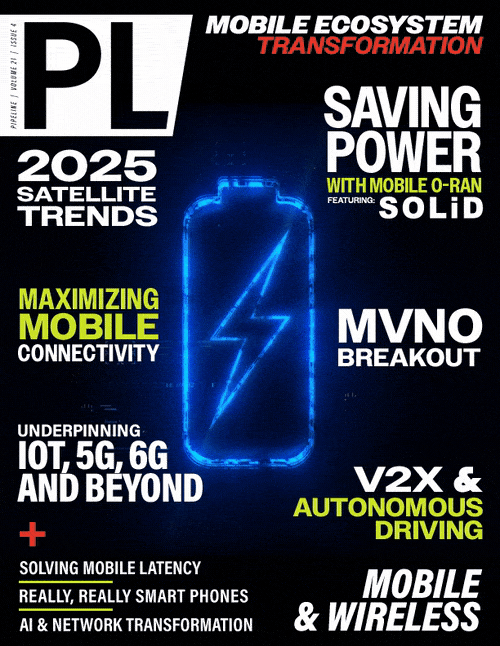Satellite’s Role in Underpinning Mobile
and Wireless Networks
6G and Beyond
Building on 5G which is essentially a ground-based wireless system, next to come is 6G which will see the creation of a new combined network that will make use of satellites, drones, high-altitude platforms (HAPs), and base stations to create a seamless communication infrastructure: the Space Air-Ground Integrated Network (SAGIN). It’s anticipated that sixth-generation wireless connectively will provide significantly higher capacity alongside microsecond latency.
In 6G SAGIN, it’s anticipated that connections will dynamically route through the most optimal part of the network, enabling low latency and high throughput. For example, satellites can provide backhaul support to ground-based stations, ensuring the various components of space, aerial, and ground networks work cohesively. This integration will give 6G networks unprecedented efficiency, speed, scalability and flexibility,
Industry specifications for 6G enabled network products are currently being developed, and it looks like the 6G SAGIN network may well be rolled out around 2030. As for 7th generation and 8th generation connectivity, what they may bring remains to be seen, but if each generation takes around a decade to arrive, that puts 7G in the 2040s and 8G sometime in the 2050s, or perhaps sooner considering how technological development accelerates over time.
Building Resilient, Reliable Networks
In a world where connectivity underpins everything from business operations to consumer applications and public safety, network reliability is paramount. Satellites add an critical layer of resilience to mobile and wireless networks, ensuring continued service during infrastructure failures or other disruptions, as well as demand surges.
To enhance reliability, the satellite industry is leveraging technologies like AI for predictive maintenance, cloud-based network management for greater flexibility, and advanced analytics to optimize performance. These efforts not only improve service delivery but also help mitigate the risk of downtime, which can have significant financial and reputational consequences.
As satellite networks grow more complex, it’s paramount that antennas and RF equipment is functioning as it should be, so that systems are optimized. And for this, it’s critical that satellite operators and service providers carry out regular testing, calibrating, and validating of antennas and RF equipment, in their operational environments. This helps ensure that antennas and equipment perform as expected, and that performance is maintained over time. Not only does this approach minimize the risk of interference and downtime so that the industry can provide a seamless, resilient, high-quality service, but it also enables cost efficiency, helping to improve return on investment. Recent innovations in portable testing solutions, using a drone-based approach, allow accurate, comprehensive assessments to be conducted whenever and wherever they’re needed, allowing operators to verify that equipment functioning as expected throughout its lifecycle.
A Collaborative Future
Satellites have long played a critical role in providing connectivity is areas where terrestrial networks are lacking, such as in remote or underserved areas where terrestrial infrastructure is impractical or cost prohibitive. And now, the transformation that the industry is going through is cementing its position as being integral in meeting the world’s connectivity needs, providing 5G backhaul, enabling IoT connectivity, and supporting terrestrial communication networks, both currently and in the future.
As the lines between satellite and terrestrial networks blur, collaboration between these sectors will be key to unlocking the full potential of mobile and wireless connectivity. By combining their respective strengths, these industries can deliver innovative solutions that address the connectivity challenges of today and tomorrow.
Whether it’s enhancing network resilience or expanding coverage to the most remote corners of the globe, the satellite industry has a vital role to play in shaping the future wireless communications. By embracing new technologies and fostering partnerships, the industry is helping to create a world where seamless, reliable connectivity is available to all.



















